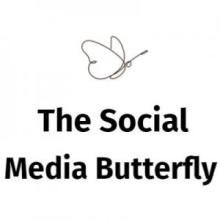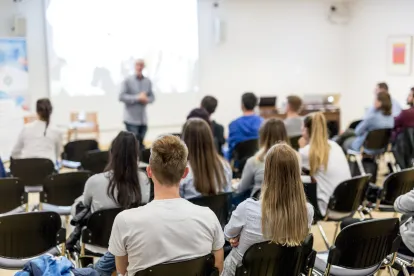In-person conferences are so important for your personal branding, business development, and professional development.
Every conference or webinar is an opportunity to brand yourself and strengthen your professional network.
Don’t be one of those people who just heads right out of an event or who half pays attention to a webinar. Be present in the moment and really immerse yourself in the experience.
Here are a few things I’ve learned on how to maximize your conference experiences.
Seize the Opportunity. If certain speakers resonated with you or inspired you, take the opportunity to email them or send a personal note on LinkedIn, and tell them why.
This type of gesture is a great way to build relationships, add valuable contacts to your network, and potentially even gain a mentor or two. Genuine compliments are a great way to build stronger relationships with individuals who you aspire to get to know better.
Be Strategic About Networking. Look at the list of attendees, speakers, and exhibitors in advance. Are there certain key individuals who you want to get to know? There is no better time or place than conferences to meet people! You have a great opportunity to make lifelong friends and colleagues. Get to know some of the leading business partners and consultants in the industry. Be smart about how and with whom you spend your time. Go to the exhibit hall – that’s always the nucleus of a conference.
Become a Thought Leader. Professional conferences and events are great opportunities to position yourself as a thought leader. Offering value-added, educational content during and after a conference is a strategic way to enhance your professional stature, which, in turn, can open other professional doors. Try publishing a post just like I’m doing here. Make sure to tag the individuals mentioned in the tweets and from the sessions you cover to foster relationship building.
Another extra credit marketing task you can do is to write a key takeaways piece from the event. You can do this whether you spoke at the event or simply just attended it. Think of yourself as chief reporter and take notes and actively listen to the speakers.
One of the highest-rated client alerts at a past firm at which I worked was an article a lawyer wrote on “Five Takeaways from the ABA Antitrust Annual Meeting.” Why? Because there were hot topics at the event and many people in his network didn’t have the opportunity to attend the event but were interested in the content. Why not bring the content to them and in the process become a valuable source of information, which will bolster your brand and keep you top of mind with them?
You could also do a post-event survey of attendees on their favorite takeaways/insights from the conference, which you can turn into a story. It’s all about being resourceful and thinking about your audience.
Be a Superconnector. If you made contact at the conference who might benefit from another contact, follow up and make the introduction. You can be of tremendous value to your network (and build stronger relationships) by connecting people to each other. They will appreciate you for introducing them, and you will strengthen your relationship with each of them in the process, which is a win-win for everyone, most importantly, you.
Take photos. You can raise your profile and potentially bring in business by posting photos to social media from the events you attend and at which you speak. Statistics show that social media posts with images, especially photos, capture the attention of your audience more than those without images.
-
Every time you attend a professional event or conference, use your smartphone to take a few photos of the presenters that resonated most with you (extra points if you’re in the photo), keynote speaker, and fellow attendees and post them to social media using the conference’s hashtag.
-
Try to include either the presentation title in the background or the host organization’s banner or logo. Make sure to use the conference hashtag (which you can find in conference materials or on their website) and a couple of other relevant hashtags related to the specific industry.
-
If you’re speaking at the conference, the accompanying text for your post can read like this (but vary it up according to your own style): “Thank you to the X organization for inviting me to speak on X topic. I greatly enjoyed discussing X topic [go into a bit of detail on what you spoke about]. Thank you to X and X (this is a good place to thank the conference or event organizers who invited you to speak and any sponsors). Then include the conference/event’s hashtag and two more hashtags on the topic – note that some events won’t have a hashtag and that’s fine – just make sure to use the @ sign to tag the organization and its sponsors.
Follow up. Following up not too soon and not too late is one of the most critical things to do after any conference or event. Here are some tips on how to build and strengthen relationships and your brand.
-
Spend time to make a thoughtful connections plan to build stronger relationships with your contacts. First, go through all of the business cards that you collected from the conference. If it’s a webinar, screenshot the list of Zoom attendees if you can see it. Then send each person a connection request on LinkedIn. Follow each person on Twitter if they have a Twitter handle. It’s also very important to add their contact information to your email address book so you can send them email newsletters and communications (with their permission of course).
-
Write follow-up emails to those individuals to whom you promised to send materials or information or make an introduction.
-
Continue to share insights and learnings after the conference and foster relationships with key contacts by having a strong social media presence. The conference hashtag will still be used after the conference, and it’s a great way to 1) identify others who provide/share great content and 2) make new/strengthen existing connections. You can also use the conference’s hashtag and other relevant hashtags to help your posts become more visible and searchable.
These are great ways to maximize your time out of the office, stay top of mind with your network, strengthen your personal brand and relationships (make sure you tag others in the photo using the @ sign before each name), promote your professional pursuits and your position as a thought leader.
Here are 12 tips for effective in-person networking I plan to use:
-
Ask people about themselves more than I talk about myself.
-
Practice active listening.
-
Say someone’s name a few times when talking to them – it helps you remember them and makes people like you more.
-
Write notes after each meaningful conversation.
-
Exit conversations gracefully.
-
Follow up and connect on LinkedIn with new and renewed contacts.
-
Put my LinkedIn QR code on my iPhone home screen to facilitate easy networking. Here’s how.
-
Add new contacts to my CRM.
-
Immerse myself in the programming. I am not going to check my email every second or do unnecessary work.
-
Write a key takeaways blog and LinkedIn post from the sessions I enjoyed and tag the speakers.
-
Create an email OOO message that supports my brand and business (see an example from Paula Edgar).
-
Have an intimate dinner with industry colleagues to get to know them better.
A Final Note. If you think of every professional activity – such as attending a conference– as a way to build your own brand and cultivate relationships, you will more effectively maximize every opportunity you have to brand yourself!
Find more tips on maximizing your in-person conference experiences.
And more networking best practices from a New York City Bar Association program with Paula Edgar.




 />i
/>i
